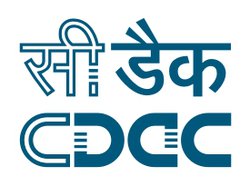
July 24, 2017
By: Michael Feldman
A number of news outlets in India are reporting the government is close to deploying six new supercomputers, two of which will deliver a peak performance of two petaflops.
 According to a report in the Hindustan Times, the six new systems are part of the initial phase of a three-phase project that eventually result in the deployment of 50 supercomputers across the country. The Indian government has allocated Rs 4,500 crore (close to 700 million USD) for the project, which was approved in March 2016. The effort is being managed by the Centre for Development of Advanced Computing (C-DAC), an R&D institution under India’s Ministry of Electronics and Information Technology.
According to a report in the Hindustan Times, the six new systems are part of the initial phase of a three-phase project that eventually result in the deployment of 50 supercomputers across the country. The Indian government has allocated Rs 4,500 crore (close to 700 million USD) for the project, which was approved in March 2016. The effort is being managed by the Centre for Development of Advanced Computing (C-DAC), an R&D institution under India’s Ministry of Electronics and Information Technology.
When the project was announced last year, the government expected to have these first systems installed by August 2017. But the most recent reports from India indicate that the Request for Proposal (RFP) for the project is just wrapping up now. According to Ashutosh Sharma, secretary in the Ministry of Science and Technology, their current goal is to have the systems up and running before the end of the year.
The six initial supercomputers will be installed at four technology centers: Banaras Hindu University, Kanpur, Kharagpur and Hyderabad -- Indian Institute of Science Education and Research, Pune, and Indian Institute of Science, Bengaluru. Of these first machines, two of them will have a peak performance of two petaflops, while the remainder will be the around 500 teraflops.
Currently, India’s most powerful supercomputer is a 1.2-petaflop (peak) Cray XC40, which is housed at the Supercomputer Education and Research Centre (SERC) for the Indian Institute of Science. It currently sits at number 165 on the latest TOP500 list, and is the highest-ranked of the country’s four systems that earned a spot on the list
One of the principle goals of the three-phase project is to develop a domestic capacity to design and manufacture supercomputers – part of the country’s “Made in India” initiative. In the first phase, three of the supercomputers will be imported, while the remaining three will be based on imported parts, but assembled in the country. In the project’s second phase, compute nodes, switches and other network componentry will be designed and manufactured domestically. In the final phase of the project, “almost the entire system” will be built in India.
The project is scheduled to take place over a period of seven years.
